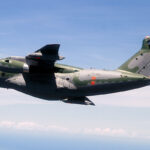Garmin has announced that its GWX 8000 StormOptix Weather Radar with Auto Mode will soon be approved for display and control via GTN Xi navigators and TXi flight displays, expanding its interface potential beyond previously approved Garmin integrated flight decks.
The GWX 8000 eliminates the requirement for pilots to manually adjust the radar, resulting in a comprehensive weather depiction with simplified operation.
Using 3D volumetric scanning capability, GWX 8000 reduces pilot workload and depicts the weather with four times the colours of traditional weather radars — while also providing hail and lightning prediction, turbulence detection and advanced ground clutter suppression.
“The GWX 8000 and its StormOptix Auto Mode technology has been praised by pilots flying Garmin integrated flight deck equipped aircraft, and now, we are expanding its display/control options to thousands more high-performance piston and turbine-powered aircraft. This revolutionary weather radar system reduces pilot workload and completely changes how pilots operate their weather radar. By eliminating the need to manually adjust tilt and gain settings, pilots of all experience levels can see a comprehensive and clear depiction of weather so they can confidently make weather-related navigation decisions,” said Carl Wolf, Garmin Vice President of Aviation Sales and Marketing.
The StormOptix Auto Mode merges 3D volumetric scanning with advanced ground clutter suppression to automatically adjust the tilt and gain of the radar system to create the most representative depiction of weather-related flight hazards near and along the flight path of the aircraft.
A high-definition colour palette provides greater colour contouring to help pilots more easily interpret the severity of an individual storm cell or multiple storm cells in an area.
This enhanced colour palette incorporates 16 colours, four times more than typically found in other weather radars on the market.
The additional colours provide a clearer picture for operation around significant weather, ultimately enhancing safety by giving the pilot more clarity on where most intense weather is, simplifying navigation through weather conditions.
Subscribe to the FINN weekly newsletter

